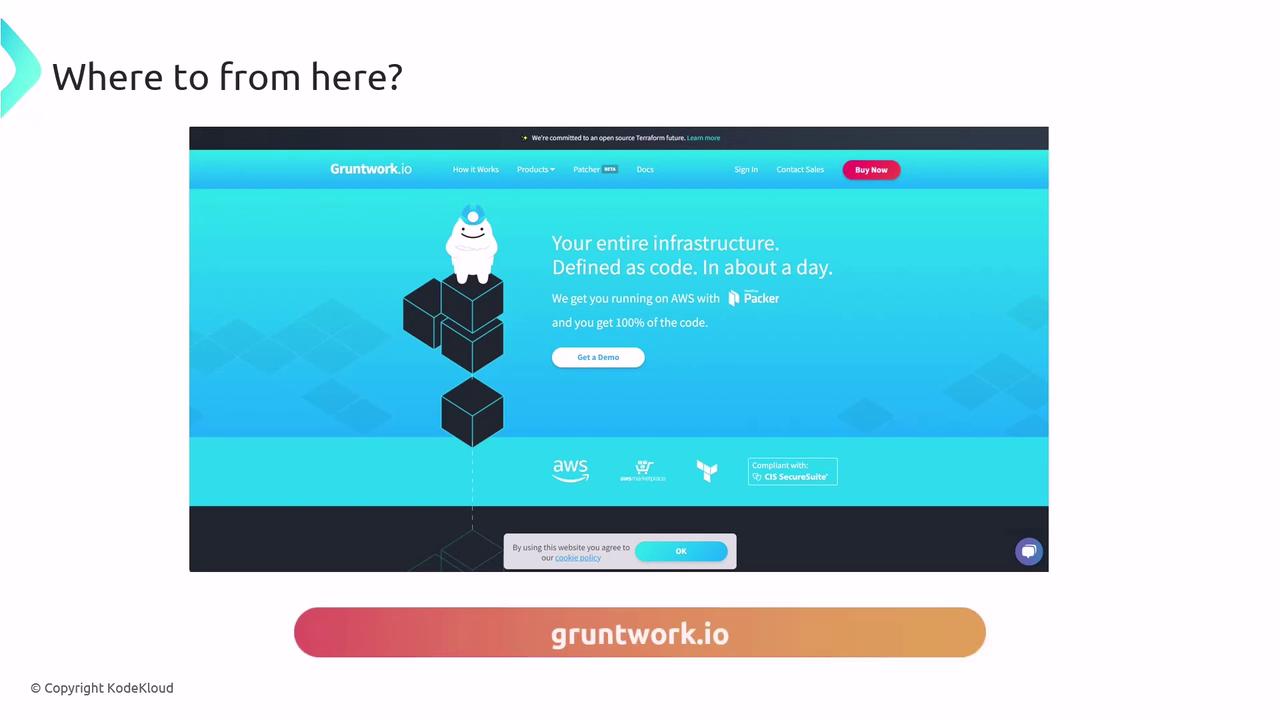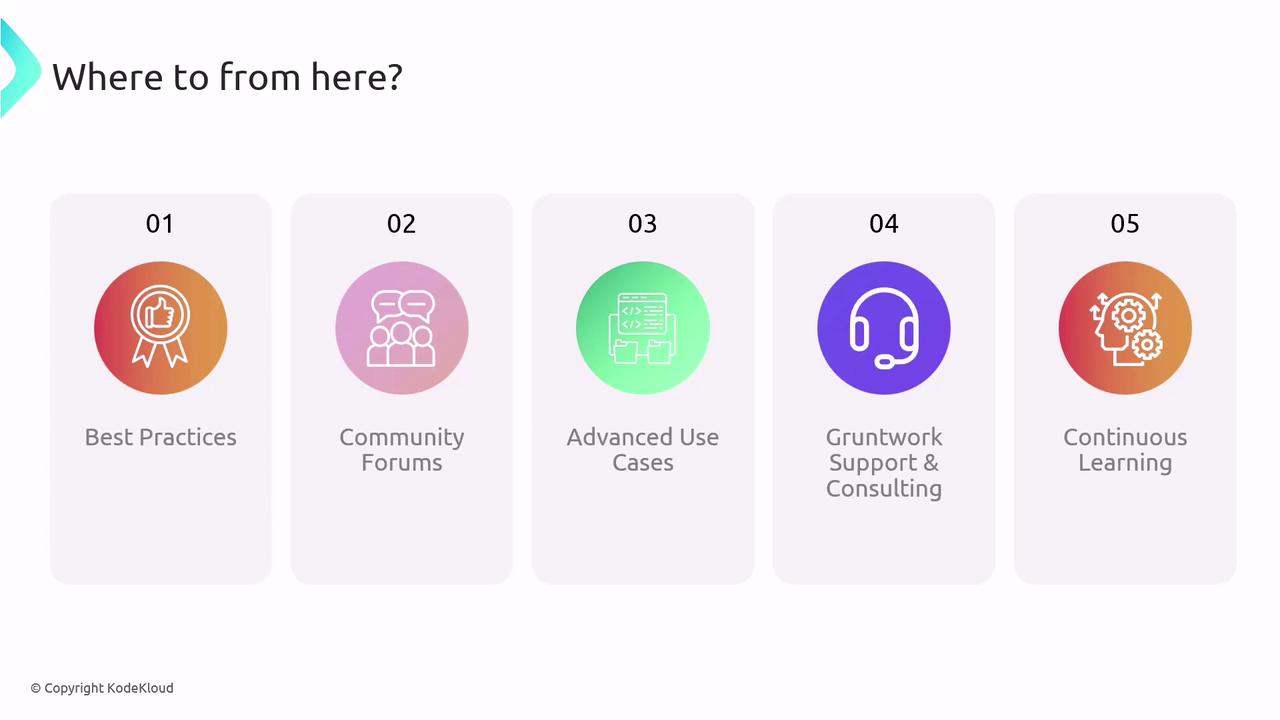Terragrunt for Beginners
Conclusion
Where to from here Useful Resources Guides and Suggestions
Now that you’ve mastered the essentials of Terragrunt, it’s time to deepen your knowledge, adopt best practices, and connect with the community. Below is a quick overview, followed by detailed guidance and links.
| Resource | Description | Link |
|---|---|---|
| Official Documentation | Comprehensive Terragrunt reference and advanced tips | https://terragrunt.gruntwork.io/docs |
| Terraform Up & Running (eBook) | Hands-on guide to Terraform best practices | https://terraformupandrunning.com |
| Gruntwork Website | Reusable modules, reference architectures, and demos | https://gruntwork.io |
1. Official Terragrunt Documentation
Dive into the official docs for in-depth tutorials, configuration reference, and troubleshooting advice. This should be your go-to resource for mastering Terragrunt features like dependency management, locking, and remote state.
Read the full documentation here:
https://terragrunt.gruntwork.io/docs
2. Terraform Up & Running (eBook)
Expand your Terraform expertise with Yevgeniy Brikman’s Terraform Up & Running. This ebook covers real-world examples, best practices, and patterns that complement your Terragrunt workflows.

Order your copy at:
https://terraformupandrunning.com
3. Gruntwork Website
Explore Gruntwork’s platform for battle-tested IaC modules, reference architectures, and expert tutorials. Leverage their code libraries to accelerate provisioning on AWS, GCP, Azure, and more.

Discover Gruntwork’s offerings:
https://gruntwork.io
4. Terragrunt Best Practices
Adopt industry-proven patterns to keep your Terragrunt codebase maintainable, DRY, and scalable. Key topics include:
- Enforcing DRY across modules
- Structuring live vs. non-live configurations
- Automating environment promotions (e.g., dev → staging → prod)
Warning
Avoid duplicating terragrunt.hcl blocks across environments. Centralize shared logic in a single parent config to reduce errors.
5. Community Engagement
Join the Terragrunt community to share experiences, ask questions, and stay current with new releases:
- GitHub Discussions: https://github.com/gruntwork-io/terragrunt/discussions
- Slack Workspace: https://slack.gruntwork.io
Note
Active participation in forums and Slack channels helps you discover real-world use cases and get fast troubleshooting support.
6. Advanced Use Cases
Take your skills to the next level by exploring:
- Dynamic configurations with
generateblocks - Custom helper functions (
read_terragrunt_config,local_file) - Complex module composition and stacking
Challenging yourself with these scenarios builds expertise for large-scale infrastructures.
7. Gruntwork Support & Consulting
For enterprise-grade projects or tighter timelines, consider Gruntwork’s professional services. Their team offers hands-on assistance, architectural reviews, and custom module development.
Learn more:
https://gruntwork.io#consulting
8. Continuous Learning
Keep up with Terragrunt and Terraform updates to maintain an agile IaC practice:
- Subscribe to release notes: https://github.com/gruntwork-io/terragrunt/releases
- Follow community blogs and webinars
- Watch for new Terraform providers and Terragrunt features
Staying informed ensures your infrastructure remains secure, efficient, and aligned with evolving best practices.

Watch Video
Watch video content